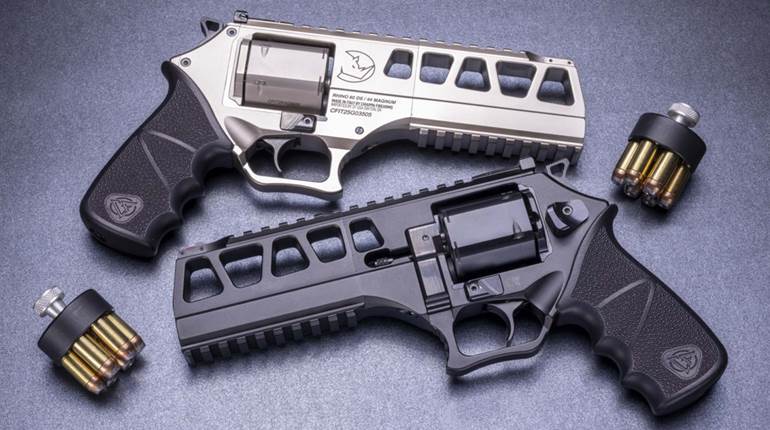
However, by the time the Anaconda was introduced to the market in 1990, its competitor handguns were well established, with some having been available 30 years before the release of the Anaconda. Thus, the Anaconda was late for the .44 Mag. market and missed the craze that came with it. The Anaconda was one of the Colt "Snake Gun" series of double-action revolvers that have since exploded in the collector's market in recent years.

The design layout of the Anaconda and other "Snake Guns" were largely the work of a Colt engineer by the name of Paul LaViolette. The new style of double-action Colt revolver included the use of a transfer bar and incorporated parts that were either cast or easily machined. Unfortunately, the Anaconda would not enjoy the popularity or praise that its other "Snake Gun" counterparts did.

When the Anaconda was released and tested, it was found to be less than satisfactory. As already mentioned, the Anaconda arrived very late to the market to compete with other well established .44 Mag. revolvers, not to mention that the market trend had moved on to double-action semi-automatic handguns by that point. That was not the only problem, as the Anaconda was not only late but less than satisfactory with build quality.

The return spring had flaws that resulted in a gritty trigger pull. Accuracy was also less than satisfactory initially until Colt changed the barrels. This made the Anaconda less than desirable for a $540 revolver at the time. While the Anaconda was not ground-breaking for the market, it was for Colt in that it was largely constructed of stainless steel. It was never offered in carbon steel like the original Ruger Redhawk.

The Anaconda also had the appearance of an upsized King Cobra with the ventilated-rib barrel of the Python, being a culmination of all the classic Colt revolver features into one gun. Inside the frame, the Anaconda is not like the popular Python. It uses a coil main spring and a transfer-bar safety. The Anaconda was basically and upscaled Colt Trooper Mark III.
The barrel lengths available included 8", 6" or 4" standard with a limited edition version with a 5" barrel. The Anaconda was chambered for .44 Mag., .44 Spl. and .45 Colt. The 53 oz. weight of the standard 6" barrels version was fine, but the design was not as balanced as contemporaries in the same category.

The Anaconda also featured adjustable sights like the Python and was marketed towards target shooters and hunters. Production of all Anaconda revolvers including special order models ceased by 2003. Despite its shortcomings and lack-luster, the Anaconda has increased in collectability over the years like the rest of the Colt "Snake Guns" and continues to do so, as there were not many made overall compared to other Colt revolver models.
To watch complete segments of past episodes of American Rifleman TV, go to americanrifleman.org/artv. For all-new episodes of ARTV, tune in Wednesday nights to Outdoor Channel 8:30 p.m. and 11:30 p.m. EST.

























